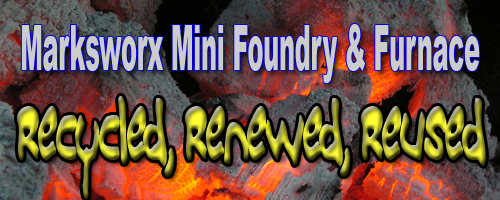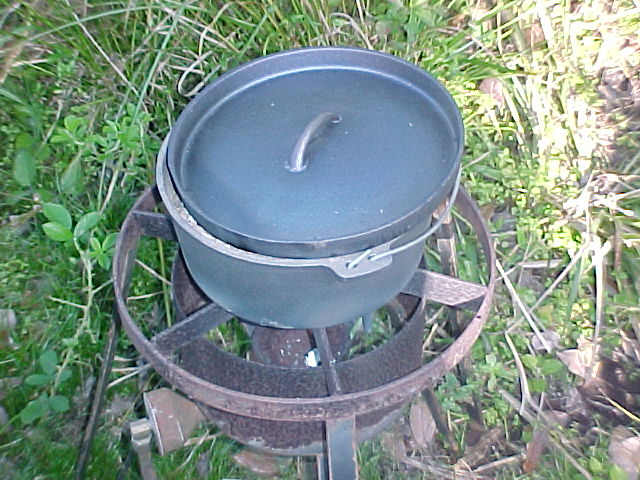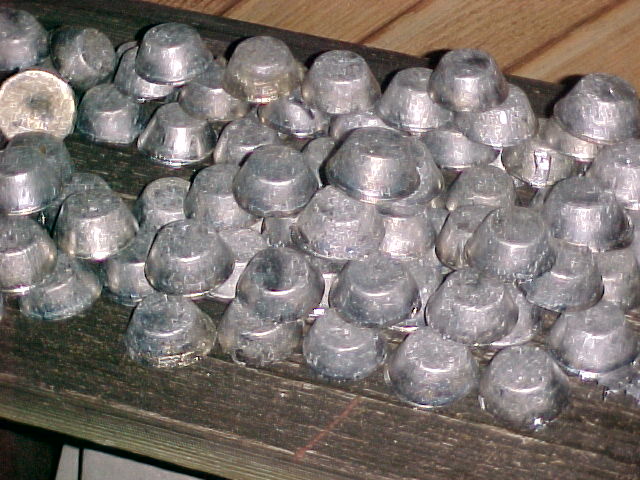
When I was a kid I often assisted my father reload shotgun and rifle or pistol ammunition in his downstairs work room. Collecting up empty casings, picking up, sorting and cleaning brass and keeping the work area clean were jobs us kids got but it taught me the process and it has led me down the path to playing with molten metals, fierce flames and heat and generally some fairly dangerous endeavours.Which leads me to a safety statement/disclaimer: The information displayed on this webpage is culminated from my experiences with dangerous and hazardous materials and conditions. The materials and processes described can cause great harm and damages to you or your surroundings. Nothing in this website should be construed as training, educational, advice or guidance, you must educate yourself on the processes, procedures and related dangers associated with working with or handling these materials as they can hurt or kill you if handled improperly. Be forewarned, Train yourself and Practice Safety always...in other words...this is Dangerous and you acknowledge by visiting and reading this site that you hold the owner harmless in any and every way from any of your actions....... Are you still with me? Then lets continue the saga...............safely.
About a year or so ago I learned that a local police firing range was being decommissioned. I knew that the range had been in use for about 20 years and had only been cleaned out once or twice; and I knew that meant a LOT of lead was sitting in those old range berms. I also knew the local police chief well enough to ask for permission to go out to the range and mine out some of the spent rounds to recover some range lead for reloading. The Chief said I could go dig...and so we did....after a couple visits of a couple hours each I found I had a nice BIG pile of spent rounds to clean up for reloading.
Naturally I now needed a vessel to hold the spent rounds and allow me to heat, re-melt the rounds and salvage the recycled bullet lead. Have you ever heard of a shop guys dream world called Harbor Freight? Check them out as they have 'cheap' tools for almost anything.....anyways I went looking for a cast iron vessel large enough to hold about 20 lbs of the recovered spent bullets. I found one made by Valley Forge? that was a 5 quart pot with a lid for only about $15. I mooched a steel tripod gas burner from a buddy at work (thanx JB!!!), the kind you use for deep frying a Thanksgiving turkey in, and the little cast iron pot fit nicely on top. Now I wasn' too sure if I would need a regulator or not but when I hooked up the gas line to my propane tank..it didn't work....drats...so I took the wrench and removed the new fangled right handed thread connector which left the propane line with only the left handed thread that screws into the female side of the propane tank valve. It worked and the flames leapt out of the burner with glee.
 So with this simple setup I looked around the house and came up with a straining spoon ( used to separate the spent round copper jackets from the molten lead ) and a small soup ladle ( from Walmart, about $4.00 ) which I used to scoop the molten lead and pour it into several small mini muffin tins. This produces a ingot small enough to simply drop into my lead pot as we reload and cast bullets and they weighed about 8 oz. each.
So with this simple setup I looked around the house and came up with a straining spoon ( used to separate the spent round copper jackets from the molten lead ) and a small soup ladle ( from Walmart, about $4.00 ) which I used to scoop the molten lead and pour it into several small mini muffin tins. This produces a ingot small enough to simply drop into my lead pot as we reload and cast bullets and they weighed about 8 oz. each.

The process I followed went something like this: First I would load up the cast iron pot with spent bullet rounds,leaving about an inch of space in the top of the pot. Then I would fire up the turkey cooker burner and turn it up high enough to have the flames lick around the bottom of the lead pot. I put the cast iron lid on the pot to help contain some heat also. I found it would take about 45 minutes for the pot of lead to come to a high enough temperature to melt out the bullet casings. I think that if I had built a containment box of some sort around the lead pot I could have held the heat better and reduced the melt time. Anyways so once the lead began to melt I used the straining spoon (wearing my welding gloves) to lift out a spoonful of hot bullets and the I would shake the strainer spoon and tease the lead out of the copper jackets by gently shaking the spoon back and forth....your arm muscles will get darn tired after 30 minutes of lifting a spoonful of lead and copper and then shaking it. If the lead flowed out of the copper jackets cleanly I would then toss the empty copper jackets into a collection bucket,leaving the lead behind in the pot. If the lead didn't flow easily I would simply toss the bullets back into the melting pot for more heat. It took about 30 minutes of continously heating the spent rounds, scooping up and shaking out the lead,to get a cleaned up pot of lead. I could cleanup about 20 lbs of lead per batch. As the copper jackets are removed and before I would scoop and pour ingots I fluxed the molten lead twice with a chunk of candle wax. I would break off about an inch of candle wax and add it to the top of the lead pot. The wax rapidly melts, bursts into flame and while it burnt I would continously scoop and stir the molten lead....alot of garbage flux material comes to the top and is skimmed off and put into a lead dross bucket. For making the lead ingots I used the soup ladle and poured the molten and fluxed lead into a set of two mini muffin tins I picked up at Big Lots ( because I'm cheap!! or is it...frugal!!)

